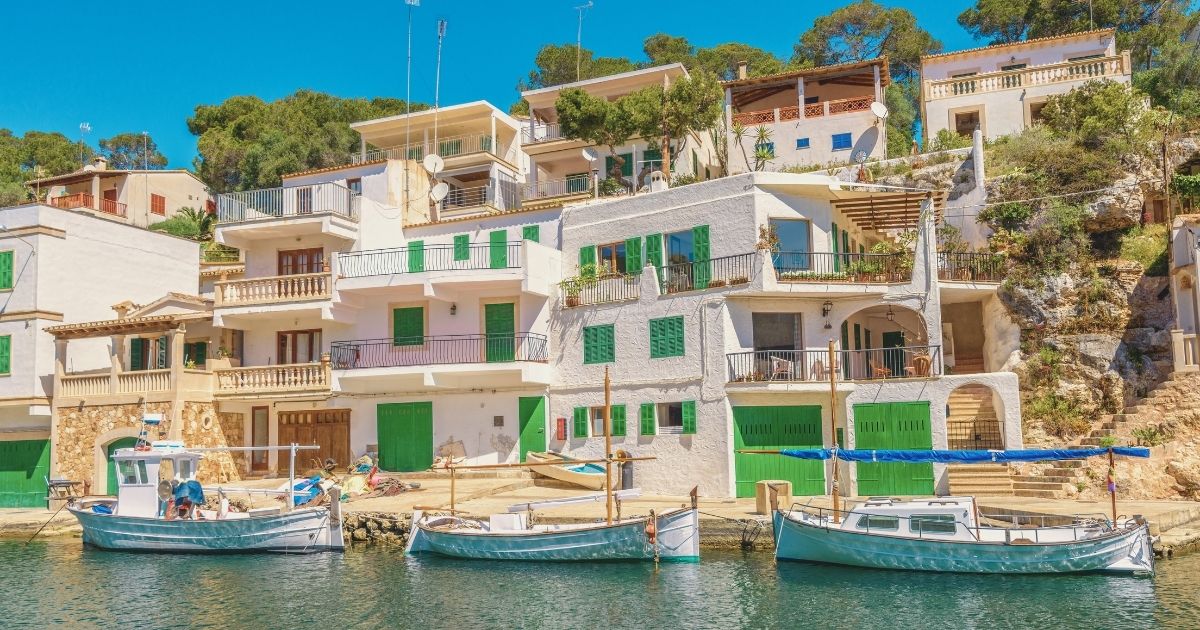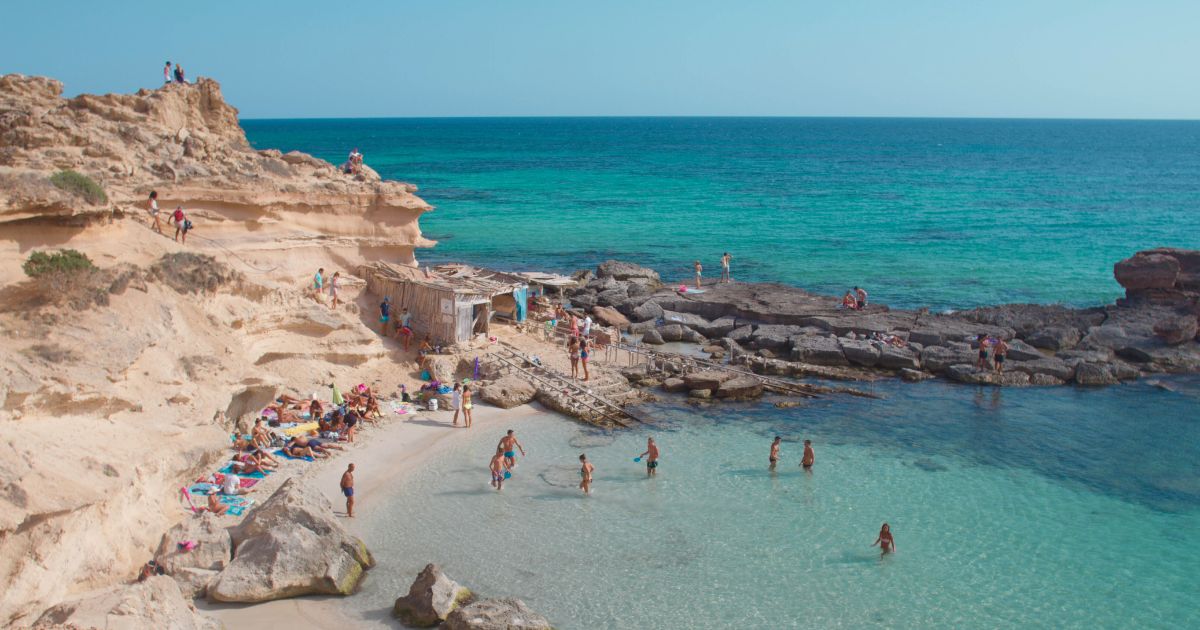Planning your journey and understanding how to get from Barcelona to Mallorca opens the door to one of the Mediterranean’s most stunning island destinations. This Balearic paradise offers digital nomads the perfect blend of beautiful beaches, vibrant culture, and excellent infrastructure for remote work.
The route from Barcelona to Mallorca spans approximately 300 kilometers across the Mediterranean Sea, offering travelers multiple transportation options to suit different budgets, schedules, and preferences.
Flight options: the fastest route
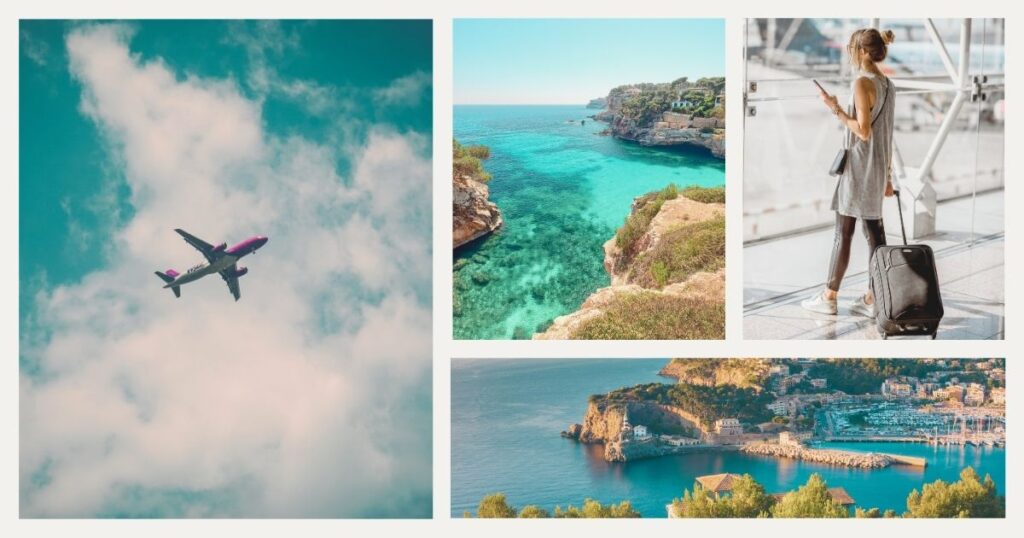
When considering how to get from Barcelona to Mallorca, flying represents the quickest and most popular option for most travelers. The flight time of just 1 hour and 15 minutes makes air travel extremely efficient, particularly valuable for digital nomads with limited vacation time or tight work schedules.
Airlines and flight frequency
Multiple airlines operate regular services when you need to know how to get from Barcelona to Mallorca by air. Vueling, Spain’s largest low-cost carrier, offers the most frequent connections with up to 8 daily flights during peak season, providing excellent scheduling flexibility for travelers.
Ryanair provides budget-friendly alternatives with competitive pricing, though their schedules may be less convenient than Vueling’s offerings. Iberia and Air Europa offer premium service options with more flexible booking conditions and superior baggage allowances, though at higher price points.
Flight schedules typically begin around 6:30 AM and continue until late evening, providing excellent flexibility for same-day trips. Most flights operate from Barcelona-El Prat Airport (BCN) to Palma de Mallorca Airport (PMI), both well-connected to their respective city centers.
Booking strategies and pricing
Understanding pricing patterns helps optimize costs when learning how to get from Barcelona to Mallorca affordably. Flight prices typically range from €30-150 depending on season, advance booking timing, and airline choice. The most economical fares often require booking 2-6 weeks in advance, while last-minute bookings can command premium prices.
Tuesday and Wednesday departures generally offer lower fares compared to weekend travel, making them ideal for flexible digital nomads. Avoiding Spanish holiday periods and summer peak season can result in significant savings, sometimes reducing costs by 40-60% compared to peak periods.
Budget airlines typically charge extra for checked baggage, seat selection, and onboard refreshments, so factor these potential additional costs when comparing total travel expenses.
🌟 Pro tip: set up price alerts on comparison websites like Skyscanner or Google Flights to monitor fare fluctuations. Prices can vary significantly even within the same week, and flexibility with travel dates often yields substantial savings.
Ferry services: the scenic alternative
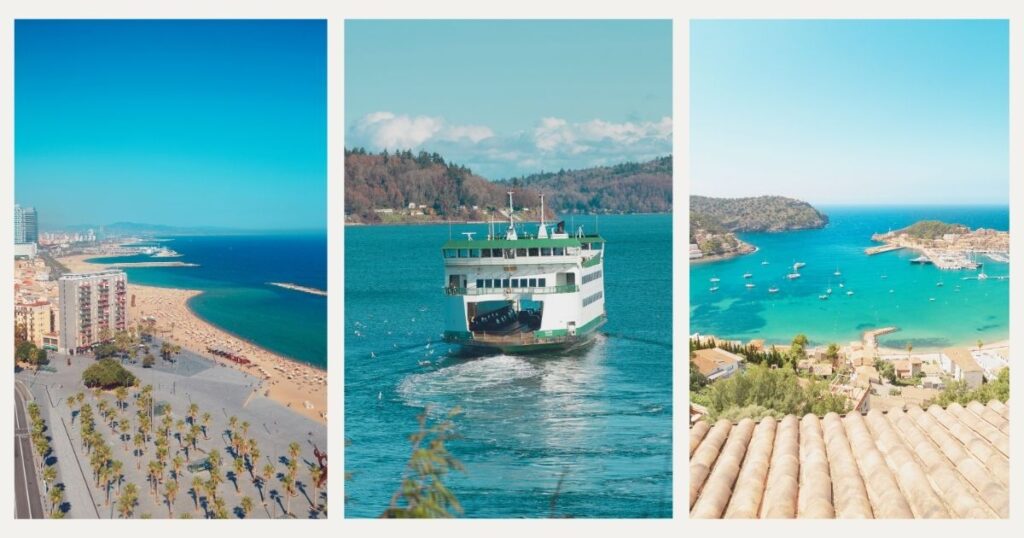
Ferry travel provides a completely different experience when considering how to get from Barcelona to Mallorca, offering scenic Mediterranean views and the ability to bring vehicles or larger amounts of luggage. While significantly slower than flying, ferries provide unique advantages for certain travel situations and preferences.
Ferry companies and routes
Trasmediterránea operates the primary ferry service for those learning how to get from Barcelona to Mallorca by sea. Their modern vessels offer various accommodation classes from basic seating to private cabins. The journey typically takes 7-8 hours for standard ferries, though high-speed services can reduce this to approximately 4.5 hours when available.
Baleària provides additional ferry options with slightly different schedules and pricing structures. Both companies offer overnight services that allow passengers to sleep onboard, effectively combining transportation and accommodation costs. Ferry terminals in Barcelona are located at the Port Vell area, easily accessible from the city center.
Ferry travel advantages
Ferry travel offers unique benefits when determining how to get from Barcelona to Mallorca with specific needs. Vehicle transport allows bringing cars, motorcycles, or bicycles, valuable for travelers planning extensive island exploration. Baggage restrictions are generally more generous than airline policies, making ferries ideal for travelers carrying work equipment or extended-stay luggage.
However, ferry travel requires significantly more time and can be affected by weather conditions that rarely impact flights. Booking cabin accommodations for overnight journeys adds considerable cost compared to basic seating options.
💡 Did you know? Ferry services between Barcelona and Mallorca have operated for over a century, originally serving as the primary connection before commercial aviation became accessible. Modern ferries now feature Wi-Fi and business centers, making them viable for digital nomads who want to work during transit.
Digital nomad considerations for travel
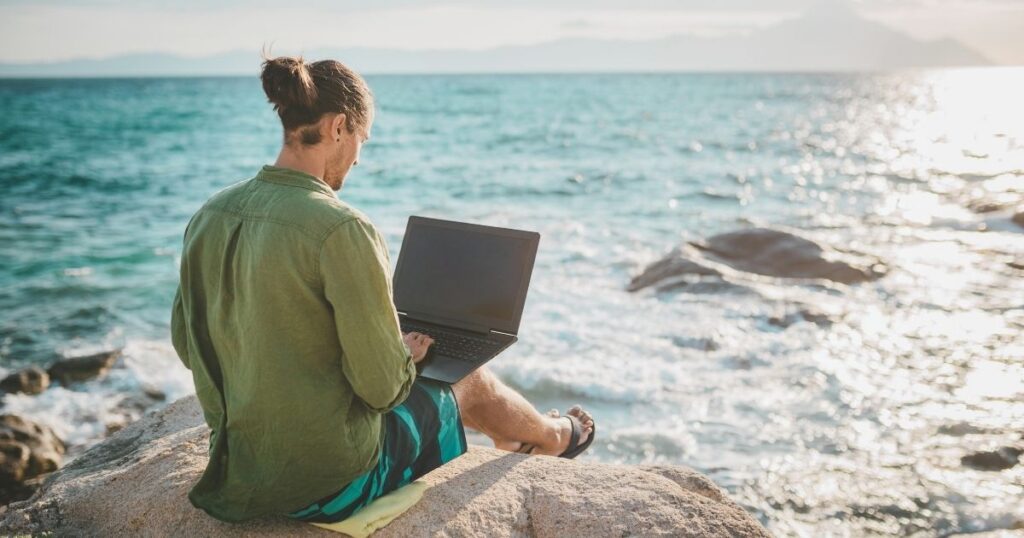
When planning how to get from Barcelona to Mallorca as a digital nomad, several practical considerations beyond basic transportation become important for maintaining productivity and connectivity during travel.
Connectivity and work requirements
Maintaining internet connectivity during travel affects how to get from Barcelona to Mallorca efficiently while meeting work obligations. Barcelona-El Prat Airport offers comprehensive free Wi-Fi throughout terminals, while most flights now provide onboard Wi-Fi services for €5-15.
For reliable connectivity throughout your journey, consider using Holafly’s convenient eSIM data packages that work seamlessly across both mainland Spain and the Balearic Islands. This ensures uninterrupted internet access from departure to arrival, essential for maintaining client communications.
Equipment and Luggage considerations
Digital nomads often travel with valuable electronics when learning how to get from Barcelona to Mallorca safely. Airline carry-on restrictions typically accommodate laptops and essential work tools, though extensive equipment may require checked baggage with associated costs.
Ferry travel provides more flexibility for transporting work equipment, including items that exceed airline size restrictions. Travel insurance becomes particularly important when transporting valuable work equipment.
🌟 Pro tip: pack essential work items (laptop, chargers, important documents) in carry-on luggage regardless of your chosen transportation method. This ensures you can continue working even if checked luggage is delayed or equipment issues arise during transit.
Seasonal considerations and practical tips

Understanding seasonal patterns significantly impacts how to get from Barcelona to Mallorca in terms of pricing, availability, and overall travel experience.
High season vs off-season travel
Summer months (June-September) represent peak travel season, requiring advance planning and higher budgets. Flight frequencies increase dramatically, with some routes offering hourly departures during peak hours, but prices can triple compared to off-season rates. Ferry services add extra departures and larger vessels during summer months, though booking well in advance becomes essential as services often reach capacity.
Despite higher costs and crowded conditions, summer travel offers maximum flexibility with flight times and the warmest weather for enjoying Mallorca’s beaches and outdoor activities. Many digital nomads find the trade-off worthwhile for combining work with optimal weather conditions.
Winter months (November-March) provide excellent value when considering how to get from Barcelona to Mallorca on a budget. Flight prices can drop to €25-40 for advance bookings, while ferry fares similarly decrease compared to peak season rates. Reduced tourist crowds mean more peaceful travel experiences, shorter airport queues, and less congested ferries.
Mallorca’s mild winter climate remains pleasant for outdoor activities and sightseeing, though swimming and beach activities become less appealing. Many digital nomads appreciate the quieter atmosphere for focused work periods while still enjoying Mediterranean culture and lifestyle.
💡 Did you know? Mallorca experiences over 300 sunny days per year, making it an attractive destination even during winter months. Many digital nomads discover that off-season visits provide better work-life balance with fewer distractions and more affordable living costs.
Documentation and travel tips
Spanish citizens and EU residents require only valid national ID cards when learning how to get from Barcelona to Mallorca, as domestic travel within Spain requires minimal documentation. Non-EU citizens should carry passports, though internal Spanish flights typically involve minimal identity verification.
Digital nomad visas or temporary residence permits should be accessible during travel, though domestic routes rarely require an extensive documentation review. Travel insurance documentation becomes important if carrying valuable work equipment or planning extended stays.
Both Barcelona and Palma airports offer business lounges, charging stations, and work areas suitable for digital nomads needing to handle communications or complete tasks during travel delays. Mobile apps for both airports provide real-time flight information and facility maps for easier navigation.
🌟 Pro tip: download offline maps and transportation apps for both Barcelona and Mallorca before traveling. This ensures access to navigation information even with limited connectivity or roaming restrictions.
Final thoughts on Barcelona to Mallorca travel
Understanding how to get from Barcelona to Mallorca empowers digital nomads to make informed decisions based on their specific priorities, whether emphasizing speed, cost, comfort, or unique experiences. Flight options provide unmatched efficiency for time-sensitive travel, while ferry services offer scenic alternatives with vehicle transport capabilities and generous baggage allowances.
The route’s popularity ensures excellent connectivity throughout the year, though seasonal planning becomes crucial for optimal pricing and availability. Digital nomads benefit from Mallorca’s excellent infrastructure, reliable internet connectivity, and growing remote work community that makes the island increasingly attractive for extended stays.
For comprehensive guidance on working remotely from Spain’s beautiful islands, explore our detailed guide to Barcelona’s best digital nomad destinations for additional insights on island life and remote work opportunities.
Ready to experience the magic of Mallorca? This beautiful Balearic island offers the perfect blend of Mediterranean charm and modern amenities for digital nomads. Let Nomada help you plan your perfect island escape and discover why Mallorca is becoming one of Europe’s top remote work destinations! 👉
Frequently asked questions about getting from Barcelona to Mallorca
For the best prices and availability, book flights 2-6 weeks in advance, especially during summer months (June-September). Ferry bookings can be made closer to travel dates, though cabin accommodations fill up quickly during peak season. Last-minute bookings are possible but often come with significant price premiums, particularly for weekend travel.
Budget airlines like Vueling and Ryanair typically offer the most economical option, with advance bookings starting around €30-50. Ferry travel costs more but includes vehicle transport if needed. Traveling during off-season (November-March) or mid-week can reduce costs by 40-60% compared to peak summer weekends.
Yes, most flights now offer Wi-Fi services for €5-15, and modern ferries provide connectivity in public areas. However, flight duration (1 hour 15 minutes) limits substantial work completion. Ferry journeys offer more time for productive work, especially on overnight services with cabin accommodations and dedicated work areas.
Airlines are required to provide alternative transportation or refunds for cancelled flights within EU regulations. Ferry cancellations due to weather typically offer rebooking on the next available service. Travel insurance can cover additional accommodation or transportation costs. Always have backup plans and flexible accommodations when possible.
Bringing a car makes sense for stays longer than one week or if planning extensive island exploration. Ferry transport costs €80-150 for vehicles plus passenger fares. Consider that Mallorca has excellent public transportation, bike rental options, and car rental availability that might be more economical for shorter visits.
